Tourist Places in BeedIn the Beed District, there are tourist attractions outside of the city. There are Puranic temples, historic forts, historical buildings, lakes, waterfalls, ancient temples, and ancient architecture in here. These are the areas we'll mention. At the base of the Bala Gad mountain, the city of Beed is located in the valley of the Bindusara River. Champavati City is another name for Beed. From the name of Queen Champavati of the Chalukya era, this name was formed. History reveals that Beed was controlled by Queen Champavati. Fortifications, some of them historical, may be seen all around this city. In Beed City, there are a lot of local and large tourist attractions, as well as historic and religious sites. Beed District's Beautiful Tourist Attractions Both mythical and historical importance are associated with the city of Beed. The Ramayana's conflict between Ravana and Jatayu is supposed to have taken place in this country. Additionally, the Nizamshahi was defeated at Rakshas Bhavan in Beed district as retaliation for the Marathi army's defeat at Panipat during the Peshwa dynasty. the Marathas became more powerful as a result. Marathi Shahi also achieved fame. Below are the Famous tourist places in Beed.
1. Kankaleshwar TempleIn the Indian state of Maharashtra, there is a Hindu temple known as Kankaleshwar Temple. It is thought to be older than 800 years old and is devoted to the Hindu deity Shiva. The temple is close to Mahabaleshwar in Maharashtra's Ghat area. 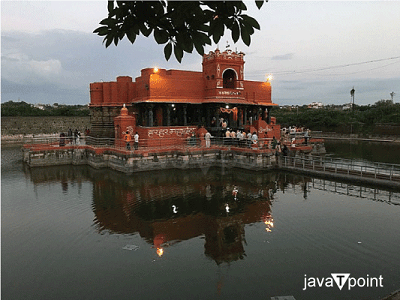
One of the "jyotirlingas," or the 12 most revered Shiva temples in India, the temple is a well-known destination for Shiva enthusiasts. Though it has undergone several repairs throughout the years, it is thought that the Chalukya dynasty built the temple. The temple has a huge shikhara, or tower, constructed in the traditional Chalukya style. Kankaleshwar, a manifestation of Shiva, is the principal god venerated at the temple. A lingam, a stone with a cylindrical shape that is put in the middle of the temple, serves as a representation of this manifestation of Shiva. The temple complex is surrounded by lush green hills, and the view from the temple is magnificent. Ganesha, Vishnu, and Parvati are just a few of the Hindu gods and goddesses that have temples in this temple. The temple celebrates a number of holidays, including Maha Shivaratri, Ganesh Chaturthi, and Navratri. During these holidays, devotees throng to the temple to pray and ask for blessings. About the TempleThis temple was constructed in the tenth or eleventh century by the Chalukya King Vikramaditya (VI). A Dashavatari temple can be found here. The Chalukya period saw direct female participation in combat. On the temple is a sculpture depicting ladies engaged in combat. It gives off a sculpture-like Greek vibe. Aryanath and Neminath, two Jain Tirthankaras, are also shown in the temple's sculpture collection. Another sanctum sanctorum is located beneath the temple pavilion, and the temple is designed like a starfish. Since 500 years ago, it has been shuttered. For many years, the shrine at Kankaleshwar was deserted. A khanqah existed. The Mahashivratri fair was also forbidden by the Nizam's administration. By means of a formal government edict, the Nizam chose a priest by the name of Shambuwa Pathak to lead the prayers at the temple. This conundrum was resolved in 1915. Aryanath and Neminath, two Jain Tirthankaras, are also shown in the temple's sculpture collection. Without pleading with the Nizam, the revolutionary youngster Purushottam Godse got past the security forces and dedicated the Pindi of the Kankaleshwar temple. This shrine was actually freed on September 17, 1948, also known as Independence Day in Hyderabad. According to a mythology, Brahma-Vishnu-Mahesha was happy. Dasi and Nidhi are seen carrying kumbh and chauri in the lowest portion of these dvarshakhas. An image of Ganesha may be seen on the front of the main sanctum sanctorum. 2. Manmath Swami MandirAt Maharashtra's Beed District, the Manmath Swami Yatra is conducted at Kapildhar. It is observed in the month of Kartik. November 27 is the Manmath Swami Yatra date in 2023. This is the location of Shiva Yogi Manmath Swami's Samadhi, or ultimate resting place. 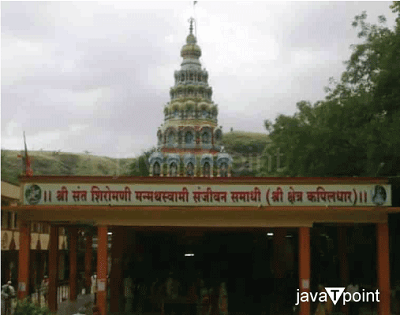
A revered saint of the Lingayat branch of Shaivism, Manmath Swami. He published a number of publications in which he explained the Abhanjas and Astang Acharan to laypeople. The Manmath Swami Mandir in Kapildhar is the destination of the yearly yatra. The yatra is attended by thousands of worshippers. During this time, special satsangs are also planned. 3. Shree Vaijnath Jyotirling DevsthanIn the Parli hamlet in the Beed district of Maharashtra, India, there is a well-known Hindu temple called Shree Vaijnath Jyotirling Devsthan. The temple is devoted to Lord Shiva and is one of India's twelve Jyotirlingas, which are said to be the most revered places where Lord Shiva may be found. The temple's history goes back to antiquity, and it's thought that it was constructed under the rule of the Yadava dynasty. The temple was constructed in Maharashtra during the Middle Ages in the Hemadpanthi architectural style, which was well-liked. Beautiful sculptures and carvings of many gods and goddesses cover the walls of the temple. 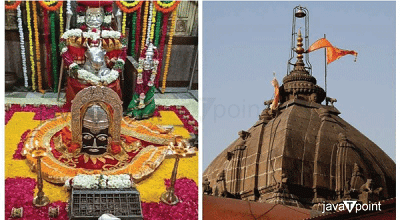
The temple's main sanctum sanctorum is where the lingam, said to have manifested itself, is kept. Black stone is used to create the lingam, which is said to be extremely powerful and lucky. Devotees from all over India visit this lingam to worship Lord Shiva and receive his blessings. Unlike most other Shiva temples, this one has a special practise of giving water to the lingam rather than milk. The neighbouring Hingoli river, which is revered, provides the water for the ritual bathing of the lingam known as the abhishek. Mahashivratri, the temple's yearly festival, is a time of intense devotion. In addition to a large deity procession through the streets of Parli, the festival is distinguished by a number of cultural events, such as music and dance performances. Shree Vaijnath Jyotirling Devsthan Parli is not only a destination of immense religious significance, but it is also a location of considerable historical and cultural value. The temple's complex carvings and sculptures provide an insight into Maharashtra's rich cultural past, and its lovely settings, such as the adjacent hills and rivers, making it a pleasant and tranquil location. ArchitectureOn top of a hill, the temple is made of stones. The temple is situated around 75-80 feet above earth. The spectacular door there is brass-plated, and the main entry is from the East. The temple is enclosed by four sturdy walls and has a courtyard as well as passageways. Near the temple's main entrance, which is also known as "Mahadwar," is a minaret with a Prachi or Gawaksha, or window. You may enter the shrine by a roomy stairway. Ahalyadevi Holkar, a Shiva devotee, restored the temple in 1706. History of Parali Vaidhyanath jyothirlinga templeLord Vaidyanatha of Parali was wed to Yogeshwari of Ambejogai. However, the lucky hour for the wedding had already gone by the time the wedding party arrived. The guests at the wedding became stone statues as a result. Parali was not waiting for Yogeshwari. One tale that is regularly told there is this one. 14 jewels were discovered as a result of the united efforts of the Gods and Demons in Amrit Manthan (Churning for Nectar). Dhanwantari and Amrit Ratnas were present. Lord Vishnu concealed the Amrit and Dhanwantari in the Shiva Linga of Lord Shankara when the Demons sprang to seize Amrit. Flames began to erupt from the Linga as the Demons attempted to touch it. The terrified Demons fled. However, there was a free flow of Amrit from the Linga when followers of Lord Shankara touched it. Even still, as part of receiving Darshan, worshippers touch the Shiva Linga. Caste, creed, or colour discrimination is not present here. Anyone is welcome to visit this location. The Lingamurthy is also referred to as Amriteshwar and Dhanvantari since it is believed to possess Amrit and Dhanvantari. "Vaidyabhyam Poojitam Satyam, Lingametat puratamam Vaidyanathamiti prakhyatam Sarvakamapradayakam". There are plenty of medicinal plants in the highlands, the jungles, and the rivers. Due of this, Parali JyotirLinga is also referred to as Vaidyanatha. The Devas were able to get Amrit with the assistance of Lord Vishnu at this location. Consequently, this location is also known as "Vaijayanti." Ravana, the Demon King, once travelled to Kailasa Mountain and performed a difficult penance in order to appease Lord Shankara. He endured the cold, the heat, the rain, and the fine, and even then, when Lord Shiva did not come in front of him, he started to chop off his head to sacrifice to the ShivaLinga. Ravana sought to sacrifice his tenth head, and then the Lord came. He gave him boons and replaced all of Ravana's heads. Lord Shiva would be a blessing for Lanka, according to Ravana. I would want to take you to Lanka, he added. Being immensely compassionate towards His followers, Shankara consented to travel to Lanka with Ravana. Shiva warned Ravanan, saying, "You must carry my Linga with care and devotion; however, do be careful not to put it down on the earth until you reach your destination, or else, it will stay at whichever place you put it down." Carrying the Shivaling, Ravana set out on his return trip. He wanted to urinate on the way to relieve himself. While he went to the toilet, he asked a young cowherd lad to hold the Linga. The cowherd struggled under the Linga's weight, and when he was unable to support it any longer, he set it down on the ground. As Lord Shiva had previously decreed, the Shiva Linga that had been placed there remained and became known as Vaidyanatheswar. The gods were upset because Ravana had taken Shiva to his own country of Lanka. They pleaded with the saint Narada to act. Ravana was greeted by Narada, who complimented him on his tapas and penance by saying. "You erred by placing your faith in Shiva. Shiva's word was incorrect in their eyes. Slander him in front of him to achieve what you want. Go to Kailasa and completely relocate it. Your ability to move Kailasa from there will be used to determine your success. Narada conned Ravana into accepting his words. Ravana quickly carried out Narada's instructions. A special power that would undermine your confidence in the strength of your arms is about to be born, Lord Shiva warned the egotistical mischievous ravana. These news and Narada's success in his mission were conveyed to the Gods by him. The gods were glad and relieved. Ravana, meantime, was content with the blessing he had received from Lord Shiva. When he came back, he was in a trance and affected by Shiva's fabled power. He was powerfully inebriated and heady. He made the choice to rule the entire universe. Only God, in the form of Rama, could have brought him under control of his ego. 4. Sri Yogeshwari Mata TempleOne of the most well-known Shaktipeeths is the ancient Goddess Durga temple known as Sri Yogeshwari Mata Temple, which is situated in Ambejogai, Maharashtra. Even the name Yogeshwari can be pronounced as Jogeshwari or Jogeswari. The kuldevi of the Ahir (Yadav) community is Yogeshwari Mata. With surnames like Vyas, Trivedi, etc., many Brahmins in Gujarat and Rajasthan adore "Yogeshwari Mata" as their Kuldevi. Yogeshwari Mata is the Kulaswamini of many Maharashtrian households, particularly those belonging to the Konkanastha Chitpavan and Karhade Brahmin communities. Yogeshwari Mata is regarded as Lord Shiva's matruka shakti. Yoga and Ishwari are the roots of her name. She is the one who controls Shakti Yoga, so to speak. 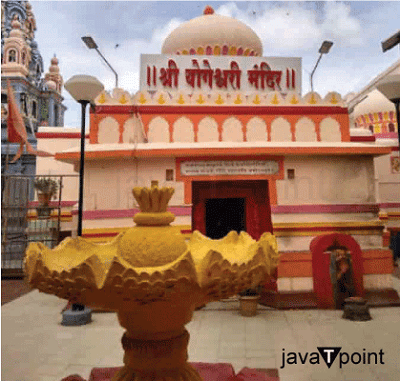
In Bhinmal, Rajasthan, there is a well-known temple with magnificent statues of Yogeshwari and Varunachi Devi. It is close to the Talbi Road. Additionally, Maharashtra is home to three well-known Yogeshwari Devi temples. The first is at Ambajogai, the second is Tambadi Jogeshwari in Pune, and the third is Kalabhairava's consort in Lanja near Ratnagiri. This temple is well built, spacious, and features a mandap. There are two doors that open into the room. The temple is a stone structure with stone sculptures of several gods atop it. There are stores at the main entrance where you may buy flowers and other items. There was no suitable spot to stay a few decades ago. There are now two Yatri Niwas in the temple, one built inside and one outside the main entrance. Another Bhakti Niwas has been built outside the back door. 5. Majalgaon DamMajalgaon Dam is thought to be an earth fill dam on the Sindphana Stream close to Majalgaon, Beed area, and it is located in the Indian state of Maharashtra. Elements of Jaikwadi Venture Level II are Majalgaon Dam and Majalgaon Right Financial Institution Tunel. Across this large tributary of the Godawari River, commonly known as the Dakshin Ganga, the Sindhaphana River, a dam has been planned. The project's estimated cost was Rs. 5423 lakhs when it was approved by the Maharashtra government in 1974. 
Majalgon Dam must be constructed with a global berm on both sides of a private tangible spillway. The Majalgaon city would be about two miles upstream of the spillway. Three wave turbines, each with a 755 watt capacity, would be installed on the dam. A 164-mile-long canal was also planned to irrigate 93865 hectacres (ICA) of land in the Parbhani, Beed, and Nanded areas. HistoryThe Jaikwadi Project Stage II includes the Majalgaon Dam and Majalgaon Right Bank Canal. The Godawari river, also called the Dakshin Ganga, has a large tributary called the Sindhaphana river, which has been blocked off by a dam. In 1976, the project's projected cost of Rs. 5433 lakhs received approval from the Maharashtra government. A concrete spillway will be gated, and on each side of it, earth berms will be used to construct the Majalgon Dam. From the town of Majalgaon, the spillway will be located around two km upstream. Three hydroelectric generators, each with a 750 kilowatt capacity, will be installed in the dam. In addition, a 165 km long canal was built to irrigate 93885 hectares (ICA) of land in the districts of Beed, Parbhani, and Nanded. 6. Kapildhara FallsIn Beed district, there is a beautiful waterfall called Kapil Dhara. It is one of the lovely Beed tourist destinations and is also known as Kapil Waterfall. The sacred Narmada River creates the first waterfall on the river Narmada, which is known as the Kapil Dhara Waterfall. Along with the Narmada, the Kapila and Erandi rivers combine to make the Kapildhara waterfall. The legendary sage Kapil, who is said to have pondered here for several years, gave the waterfall its name. It cascades down from a height of roughly 100 feet. In accordance with the ancient scriptures, Kapil muni is claimed to have received the holy light right here. Additionally, while living in the Kapil Ashram, he wrote the sophisticated book "Sankhya Philosophy," which is on mathematics. 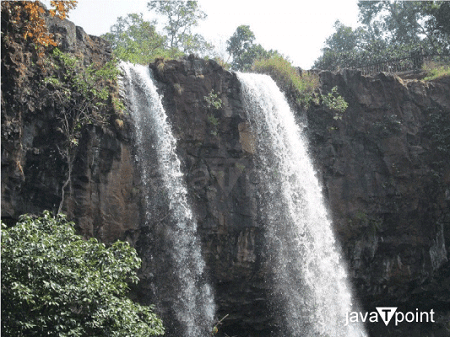
The towering mountains, thick woods, and low-lying hills that surround Kapildhara are all beautiful. From the parking area, the falls are around 500 metres away. One may cool off in the chilly waters at the waterfall's base, which is reachable by concrete stairs. In addition, at the Kapil Ashram, tourists also pay respect to the guru Kapil and Lord Kapileshwar Shiva's footsteps. Doodh Dhara Waterfall, which is equally worthwhile viewing, is accessible by decending 100 stairs. The months of September to January, the post-monsoon season, are still the finest for visiting the falls even though it is possible to do so year-round. 7. Baidyanath TempleOne of India's twelve Jyotirlingas and the most revered residence of Lord Shiva, the Baidyanath Jyotirlinga temple, also known as the Baidyanath Dham, is a Hindu temple. The enormous and spectacular Baba Baidyanath temple complex, which can be found in the Deoghar division of the state of Jharkhand, is made up of twenty-one additional noteworthy and stunning temples in addition to the main temple of Baba Baidyanath, where the Jyotirlinga is located. 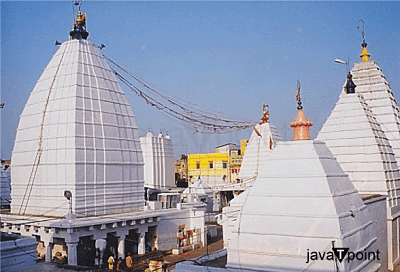
Every year, during the Shravan mela, millions of devotees travel to the Baba Baidyanath Dham Temple. They transport water 108 kilometres away, from Sultangaj's Ganges River, to the temple, which makes it even more impressive. Rumour has it that there is an uninterrupted queue of devotees that extends for 108 kilometres! Legend of Baba Baidyanath Dham TempleIt's worth reading a historical account that relates to the foundation of this temple. When Ravana, King of Lanka, thought that his city would be lacking and always threatened by foes until and until Mahadeva (Lord Shiva) agreed to dwell there permanently, he made continual pleas to the Lord. Shiva gave Ravana permission to bring his "Atmalinga" to Lanka, but only under the strict stipulation that the lingam must not be broken up during the voyage or given to a different individual. The lingam would be permanently fixed at the location where it was deposited if this were to occur. The other gods opposed this scheme because they were aware that if Shiva accompanied Ravana to Lanka, Ravana's wicked activities would pose a threat to the entire universe. In order to enter Ravana's stomach on his journey back, they pleaded with the God of Water, Varuna. Ravana gave the lingam to a Brahmin who was actually Lord Ganesha since he had a strong impulse to discharge water as soon as the Lord accomplished that. This area, which is today called Baidyanath Dham, was where the Brahmin erected the lingam. The lingam had been set there, and Ravana made a valiant effort to take it away. As a result of his violent response to his aggravation at being unable to achieve his goal, he harm the lingam. He proceeded to go there every day for the rest of time due to his remorse. Harilajori, a location about four miles from Baidyanath, is the site of Lord Shiva's descent to Earth. Baidyanath Jyotirlingam is the name of the lingam, and Deoghar is the location where it is maintained. Baidyanath Dham TempleThe builder of Gods, Vishwakarma, constructed the Shiva temple, so the legend goes. The major temple, the centre of this main temple, and the temple's entrance make up the three distinct sections of the building. This temple, which is 72 feet tall and lotus-shaped, faces east. The Maharaja of Gidhaur, Raja Puran Singh, gave three gold vessels in the form of rising cylinders for the summit. In addition to these containers, there is a "Punchsula," which consists of five knives in the form of a trident, and Chandrakanta Mani, an eight-petalled lotus gem. The big slab's centre lingam, which has a diameter of around 5 inches, protrudes by about 4 inches. This lingam's top has been broken off. The Lord Shiva Temple, which is regarded as the ultimate one, is one of several temples in the courtyard that are devoted to various gods and goddesses. The shrines honour Lakshminarayan, Maa Parvathi, Maa Kali, Maa Jagat Janani, and Kal Bhairav and are constructed in both contemporary and traditional architectural styles. Using red holy threads, the Maa Parvati temple is strung up to the main temple. It is important to note this distinctive quality since it represents the union of Shiva and Shakti. 8. Dharur FortBeed district in Maharashtra state is an important district in terms of tourism. Dharur Fort is one of the historical places in the Dharur taluka of Beed district. There are various tourist spots in the Beed district. Dharur Fort is known as a major historical tourist spot in the Beed district. ( In past time ) The fort of Dharur was under the control of the Nizam of Hyderabad. 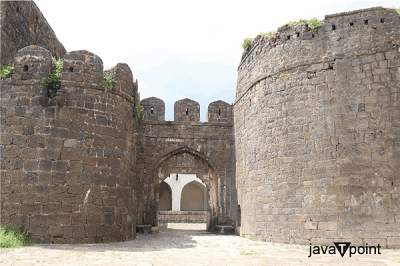
Since the fort of Dharur was under the control of the Nizams, the fort did not face much trouble and even today the remains of the fort are in good condition. History of Dharur Fortistory of Dharur Fort Beed.In the Beed district, Dharur Fort is a popular tourist destination. The kaij bus station in the Beed area has ST buses that may take you to this fort. Dundur Fort Mahadurg used to be the name of this fort. By piling small stones on top of one another, the fort's framework is created. The only fort that fits both the Giridurg and Bhuikot kinds of forts descriptions is Fort Dharur in the Beed district. Ancient periods were used to construct this fort. Famous for its design is Dharur Fort. You may examine the fort's surroundings, including its surrounding scenery, after ascending to the fort's upper level. You can also study the fort's primary structural elements. 9. Amleshwar mandirMaa Pitambara Temple is a Hindu shrine to the Bagalamukhi mahavidya goddess, and it is situated in the Indian city of Amleshwar (south of Raipur), around 15 km from Raipur Airport and 25 km from Durg. 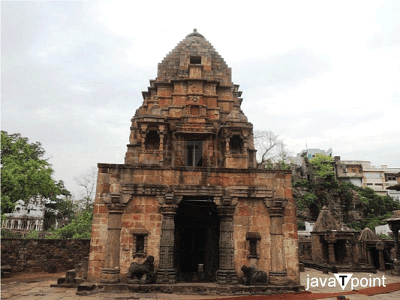
Param Pujaya Shri Shri Pitambara Pithadhishwar Yogiraj Youdhishthir Ji Maharaj founded it. About 5 kilometres from Raipur Railway Station, it is reachable via train. 10. Sautada FallsThe Vincharana River waterfall at Sautada, a location in the Patoda Taluka, is well-known. The river Vincharana, which rises in the mountainous Patoda Taluka, continues to flow and eventually descends into the valley at Sautada, where it drops around 70 metres. Here, there is a well-known waterfall. 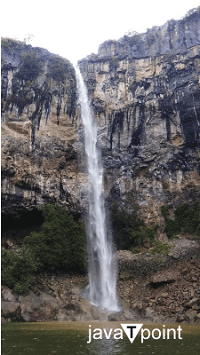
A Mahadev temple was erected in this valley by Lord Rama and Sita. Known as Rameshwar. When the tide is high and a gorgeous waterfall is tumbling on the river after the Shravan rains, it is a truly magical sight. The old Hemadpanthi Mahadeva temple in Sautada Rameshwar, also known as Mahabaleshwar in Marathwada, as well as the deep valley next to it and the massive waterfall that cascades down from a height in that valley, should all be viewed and filled with the heart's sincere appreciation of nature's grandeur. This location is undoubtedly worth seeing at least once, and this beauty does indeed become more visible during the rainy season. Rameshwar Sautada hamlet, located on Nagar Beed Highway, is a historical Beed district hamlet. Thanks to the deep valley and waterfall that flow through it, you may witness a mystical and stunning natural marvel here. A second aspect is that in addition to the large main waterfall, the region is also home to other smaller and larger waterfalls, as well as little and larger streams that sing a highly musical melody. The landscape is also covered in green shaloo. the mind is made happy and refreshed. The mind is made joyful even if we only hear the sound of all these little and large waterfalls. 11. Mali Chowk and Hiralal ChowkMali ChowkOne of the oldest marketplaces in the area, Savta Mali Chowk is situated on Midc Road in Beed. It houses a variety of roadside food stalls as well as businesses run by local clothing retailers. As soon as one steps foot inside the market, there is no apparent difference between it and the market scenes seen and portrayed in Indian period films. 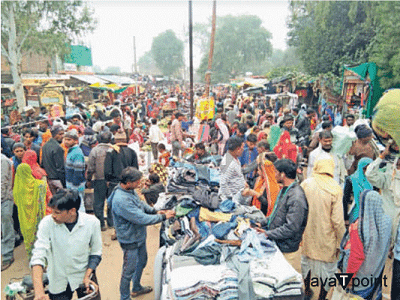
Hiralal ChowkThis market is located on the remains of the Mahbub Ganj market, which was built during the Mughal Empire's reign. This location, which is in the Vipra Nagar neighbourhood of Beed, too seems to have the aura of history permeating every store in the market area. There is almost any distinction between these two market segments, which have both existed since the dawn of mankind. The fundamental framework of these marketplaces is supposed to have existed since the reign of the Yadhava kings, who were followed by several more dynasties, including the Muslim ones. ConclusionIn conclusion, Beed is a jewel that has been kept buried in the heart of Maharashtra, giving a special fusion of historical, cultural, and natural features that appeal to a variety of interests. Additionally, tourists have the chance to fully immerse themselves in the rich regional culture and customs during the energetic festivals and fairs that are held all throughout the year. Anyone seeking to experience the allure of rural India should visit Beed because of its friendly hospitality, delectable cuisine, and inviting atmosphere. Therefore, Beed has something unique to offer, making it a must-visit location for tourists seeking a genuine and enlightening experience. Whether you're a history buff, a nature lover, or simply wanting a vacation from the hustle and bustle of city life, Beed has something special to offer.
Next TopicTourist Places in Chakur
|
 For Videos Join Our Youtube Channel: Join Now
For Videos Join Our Youtube Channel: Join Now
Feedback
- Send your Feedback to [email protected]
Help Others, Please Share









